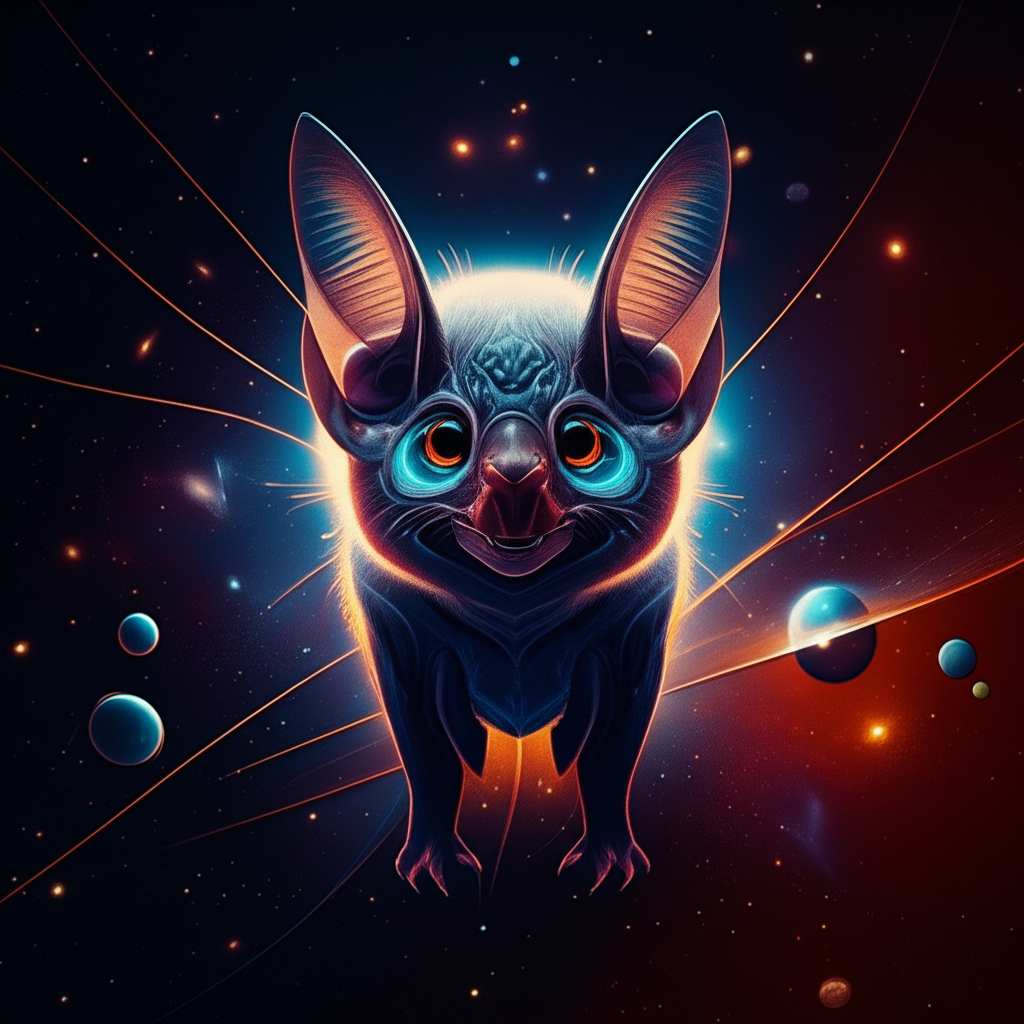Cosmic Spectacle: Astronomers Unfurl the Glowing Wings of a Bat-Shaped Nebula
The universe continues to amaze, revealing celestial artistry shaped by cosmic forces.

In the vast canvas of the cosmos, astronomers are constantly discovering new wonders that push the boundaries of our imagination. The latest breathtaking capture showcases a vast nebula, whose glowing interstellar clouds have been sculpted into a remarkably distinct bat-like shape. This discovery not only adds to the universe's gallery of cosmic art but also provides invaluable data on how massive stars interact with and shape their stellar nurseries.
A Celestial Creature Takes Flight
This newly observed celestial phenomenon, informally dubbed the 'Bat Nebula' due to its distinct outline, is composed of swirling dust and gas, illuminated by the powerful radiation of hot, young stars embedded within. The 'wings' of the bat are not solid structures but rather intricate patterns formed by the complex interplay of stellar winds, radiation pressure, and the gravitational collapse of surrounding material.

These interstellar clouds are the birthing grounds for stars, and nebulae like this one are critical for understanding the lifecycle of stars, from their nascent stages to their eventual fiery ends. The vibrant colors observed are due to different elements being ionized by intense ultraviolet light from nearby stars; hydrogen typically glows red, while oxygen often emits a blue-green hue.
The Sculptors of the Cosmos: Stellar Winds and Radiation
The striking shape of the Bat Nebula is no accident. It's a direct result of powerful forces at play. Massive, newly formed stars within the nebula emit fierce stellar winds – streams of charged particles – and intense radiation. These forces act like cosmic sculptors, pushing away the surrounding gas and dust, carving out cavities and filaments, and creating the intricate patterns we observe.
- ✨ Radiation Pressure: The sheer energy from young, hot stars pushes gas and dust outwards.
- 💨 Stellar Winds: Outflows of material from stars can clear vast regions around them, forming bubbles and cavities.
- 🌌 Density Variations: Differences in the density of the interstellar medium dictate how these forces interact, leading to complex and often beautiful shapes.

Peering Deeper into Stellar Evolution
Observations of such structures are crucial for astronomers to refine their models of star formation and stellar evolution. By studying the morphology and composition of these nebulae, scientists can infer the ages of the embedded stars, the density of the surrounding gas, and even predict where new stars might form next. The detailed imaging of the Bat Nebula, likely performed with powerful telescopes like those managed by ESO or through advanced sky surveys, allows for a precise mapping of these dynamic regions.
Each new image from space is more than just a pretty picture; it's a data-rich canvas that helps us piece together the grand narrative of the universe. The Bat Nebula stands as a luminous testament to the immense power and artistic flair of cosmic processes, reminding us of the endless wonders awaiting discovery beyond our planet.





